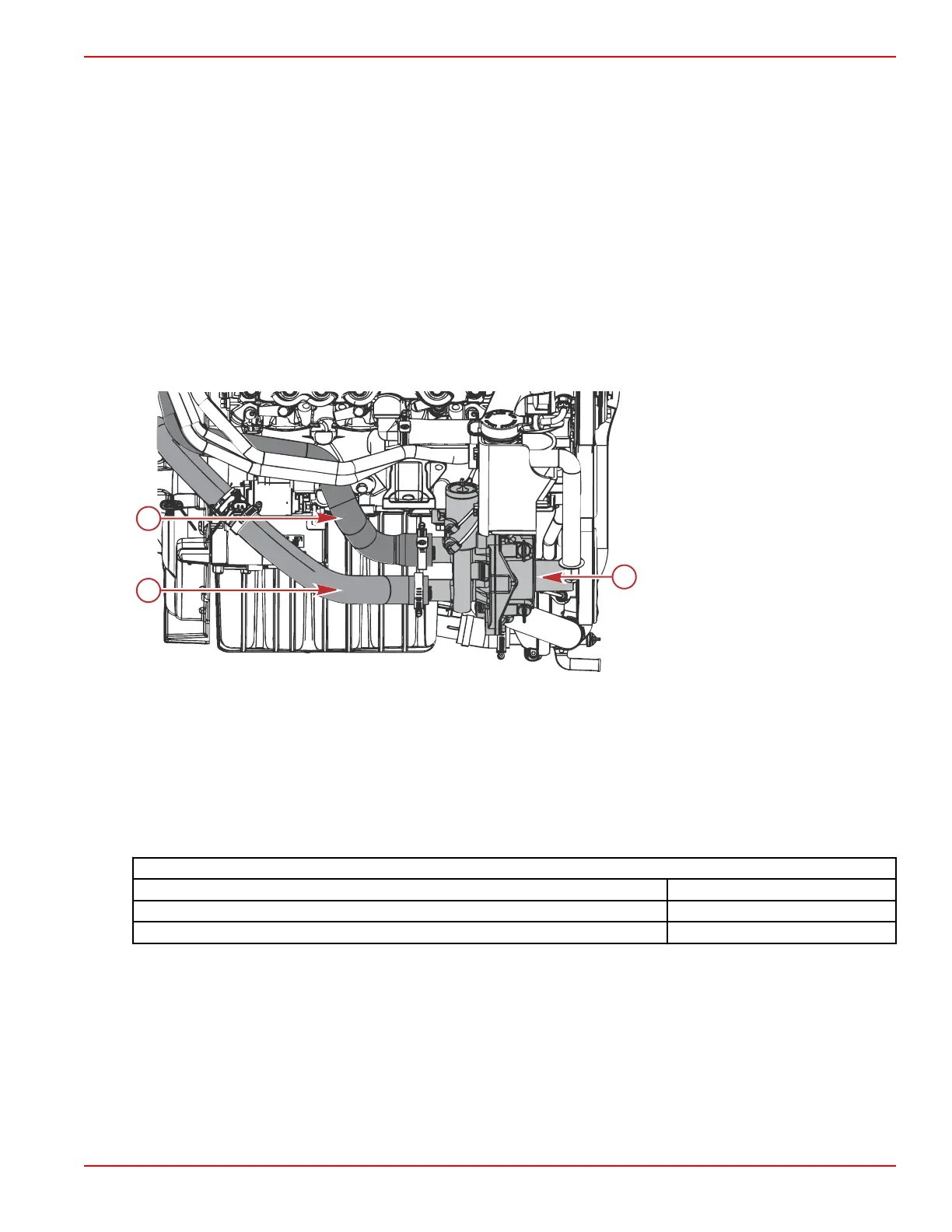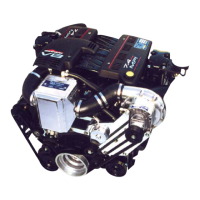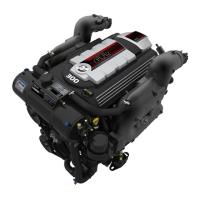Seawater Pump Output Test
IMPORTANT: Note the following:
• The boat must be in the water for this test. This test cannot be performed with a flush‑test device and water hose.
• Due to the manner in which this test is performed, it may not be possible to detect a marginal condition or a high‑speed
water pump output problem.
• Perform this test accurately or problems may not be detected. An error in setting the engine RPM, timing the test, or
measuring the water output will affect the overall accuracy of the test and may produce misleading results. To help ensure
accurate results:
• Use a shop tachometer with an error rate of less than 5%. Do not use the boat tachometer as it may not have the
necessary precision.
• Use a stop watch to time the duration of the test to help ensure that accuracy is maintained.
• Use a 9.5 L (10 US qt) or larger capacity container to measure the water output.
If the engine overheats, use this test to determine if a sufficient amount of water is being supplied to cool the engine:
1.
Models with engine‑mounted seawater pumps: Remove the seawater outlet hose, and replace it with another hose of
the same diameter but approximately 1 m (3 ft) longer. The hose should have adequate wall thickness to prevent it from
kinking when performing the test. Clamp the hose at the pump outlet only. Do not clamp the hose at the engine cooler end.
a - Seawater inlet hose
b - Seawater outlet hose
c - Seawater pump
2. Place a 9.5 L (10 US qt) or larger container near the unclamped end of the hose.
3. With the assistance of another person, start the engine and adjust the speed to exactly 1000 RPM while holding the
unclamped end of the hose on the connection on the engine. Remove the hose from the connection on the engine and
direct the water flow into the container for exactly 15 seconds. At the end of 15 seconds, direct the water flow overboard,
return the engine to idle and stop the engine. Reconnect the hose to the engine.
4. Measure the quantity of water discharged into the container and compare with the specifications given in the following
chart.
NOTE: Values listed are minimum discharge quantities. Typical values at 1000 RPM are approximately 1.4 times those
listed.
Engine‑Mounted Seawater Pump Output for a 15‑Second Period at 1000 RPM
Model Minimum Quantity
Bravo model with standard cooling 8.8 L (9.3 US qt)
Bravo model with closed cooling and an external water pickup 11.0 L (11.6 US qt)
5. Repeat the test four times to confirm the results.
Water Heater Installation
IMPORTANT: When connecting a cabin heater or water heater:
• The supply hose—from the engine to the heater, and return hose—from the heater to the engine, must not exceed 16 mm
(5/8 in.) inside diameter (ID).
•
Using the water heater fitting kit, make the heater connections only at the locations shown. Refer to the Mercury Precision
Parts Accessories Guide, for kit details.
• Refer to the manufacturers' instructions for complete installation information and procedures.
• Do not reposition the engine temperature switch.
All Models
90-8M0099748 eng DECEMBER 2015 © 2016 Mercury Marine Page 6A-3
